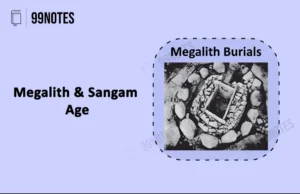29 Feb 2024 : Indian Express Editorial Analysis
Indian Express Editorial Analysis
29-February-2024
1. We, the consumers
| Topic: GS3 – Indian Economy – Growth and Development This topic is relevant for both Prelims and Mains in the context of understanding consumption patterns and expenditure distribution which is crucial for topics related to microeconomics, such as consumer behavior, demand and supply analysis, and welfare economics. |
| Context: |
|
Changes in Survey Methodology:
- The HCES introduces significant changes in survey methodology compared to previous rounds.
- These changes include the division of expenditure into three separate surveys, multiple household visits, and imputed values for items received free of cost.
- While these changes improve data quality, they also affect comparability with previous rounds, potentially leading to upward bias in estimates.
Trends in Poverty Levels:
- Despite premature comparisons suggesting a dramatic reduction in poverty, the full data release is awaited.
- The number of items covered in the HCES has increased from previous rounds, affecting poverty estimates.
- Without unit-level price and quantity data, the validity of imputed values remains uncertain.
Inequality within India:
- Examining within-survey indicators reveals insights into inequality trends.
- Rural-urban disparities in consumption expenditure have fluctuated over time, with a recent decline in rural-urban inequality.
- However, rural-urban price differentials and longer-term trends caution against simplistic interpretations.
Inter-Caste Differences:
- Analysis of inter-caste differences indicates marginal improvements for Scheduled Tribes (ST) and Other Backward Classes (OBC) in rural areas.
- In urban settings, there is a narrowing of inter-group consumption expenditure gaps, suggesting progress in urban inequality reduction.
Shifts in Consumption Patterns:
- The HCES highlights changes in consumption patterns over the decade, including a decline in the share of food expenditure and an increase in processed foods and beverages.
- Medical expenses, conveyance, and durable goods show increased expenditure shares in both rural and urban areas, while urban India sees a rise in expenditures on paan, tobacco, and intoxicants.
Conclusion:
- While the release of the HCES factsheet is a positive development, limitations in comparability with previous rounds underscore the need for caution in interpreting trends.
- To inform policy effectively, timely release of full data, including unit-level price and quantity data, is essential.
- Despite welcome changes in survey design, ensuring minimal changes in survey instruments will enhance the survey’s utility for measuring longitudinal trends accurately.
| Significance of Consumer Expenditure Survey (CES) |
|
| PYQ: India has experienced persistent and high food inflation in the recent past. What could be the reasons? (2011) 1. Due to a gradual switch over to the cultivation of commercial crops, the area under the cultivation of food grains has steadily decreased in the last 5 years by about 30%. 2. As a consequence of increasing incomes, the consumption patterns of the people have undergone a significant change. 3. The food supply chain has structural constraints. Which of the statements given above are correct? (a)1 and 2 (b)2 and 3 (c)1 and 3 (d) 1, 2 and 3 Ans: (b) |
| Practice Question: Discuss the findings of the Household Consumption Expenditure Survey (HCES) for 2022-23 and its implications for understanding India’s consumption patterns, poverty levels, and inequality trends. (250 words/15 m) |
2. The family we choose
| Topic: GS2 – Governance – Government policies – Issues arising out of their design & implementation. GS2 – Social Justice – Health This topic is relevant for both Prelims and Mains in the context of understanding the evolving legal landscape surrounding surrogacy which provides insights into changing family dynamics and societal attitudes towards assisted reproductive technologies. |
| Context: |
|
Shift towards Altruistic Surrogacy:
- The Surrogacy (Regulation) Act, 2021, prohibits commercial surrogacy, emphasizing altruistic arrangements where surrogates do not receive monetary compensation.
- The Act allows only gestational surrogacy, facilitated by ARTs like In-Vitro Fertilisation (IVF), and sets criteria for both intending parents and surrogates, limiting surrogacy to married couples and ever-married single women.
Contested Eligibility Criteria:
- The exclusionary approach in determining eligibility criteria, particularly based on marital status, is currently under scrutiny in the Supreme Court.
- Various petitions challenge the Act’s emphasis on current or previous marital status, highlighting concerns regarding equality and discrimination.
Celebratory Stance towards Reproductive Technologies:
- The regulation of ARTs and surrogacy reflects a celebratory stance towards reproductive technologies, aimed at mitigating infertility stigma.
- However, this stance often overlooks alternative family structures and perpetuates traditional notions of biological relatedness and purity of bloodlines.
Emphasis on Gamete Congruence:
- The latest amendment permits the use of either parent’s gamete along with a donor gamete in certain medical conditions.
- However, this option is not extended to single women, emphasizing absolute congruence with gamete contribution by intending parents.
Call for Equality in Family-Making Options:
- The distinction between surrogacy and adoption as a “choice” versus a “right” underscores patriarchal norms surrounding bloodlines and reproductive choices.
- However, there is a growing call for equal recognition of surrogacy and adoption as valid family-making options without implying disparities in their status or legitimacy.
Conclusion:
- The evolution of surrogacy regulation in India reflects incremental changes aimed at promoting altruistic surrogacy while addressing ethical and legal complexities.
- However, challenges remain regarding eligibility criteria, gamete contribution, and the recognition of diverse family structures.
- Achieving equality in family-making options requires a nuanced approach that upholds reproductive rights without perpetuating discriminatory norms.
| Key Provisions of the Surrogacy (Regulation) Act, 2021 |
Regulation of Surrogacy:
Eligibility Criteria for Surrogate Mother: To obtain a certificate from the appropriate authority, the surrogate mother has to:
Further, the surrogate mother cannot provide her own gametes for surrogacy.
National and State Surrogacy Boards:
Offences & Penalties:
These offences will attract a penalty of up to 10 years and a fine of up to 10 lakh rupees. |
| Practice Question: Critically analyze the recent developments in the regulation of surrogacy in India, with a focus on the Surrogacy (Regulation) Act, 2021, and subsequent amendments. Assess the implications of these regulatory changes on reproductive rights, gender equality, and family dynamics in Indian society. (250 words/15 m) |
For Enquiry

29 Feb 2024 : Indian Express Editorial Analysis

Magadha Empire (544-320 BCE): Ancient India’s Glorious Kingdom (Ancient History Notes)

28 Feb 2024 : Daily Current Affairs Quiz

28 Feb 2024 : Daily Answer Writing

28 Feb 2024 : Daily Current Affairs

28 Feb 2024 : Indian Express Editorial Analysis

28 February 2024 : The Hindu Editorial Notes PDF

28 February 2024 : PIB Summary for UPSC

Megaliths: Ancient Stones & Their Mysteries (UPSC Exam Notes)

27 Feb 2024 : Daily Current Affairs Quiz
Indian Express 29 Feb 2024 : Indian Express Editorial Analysis Indian Express Editorial Analysis
29-February-2024
1. We, the consumers
Topic: GS3 – Indian Economy…
Ancient India Magadha Empire (544-320 BCE): Ancient India’s Glorious Kingdom (Ancient History Notes) Magadha Empire
The Magadha Empire was a significant ancient Indian kingdom, renowned for its contribution…
Daily Quiz 28 Feb 2024 : Daily Current Affairs Quiz 28 Feb 2024 : Daily Quiz…
mains answer writing 28 Feb 2024 : Daily Answer Writing Mains Answer Writing
28-February-2024
Q1) The Lokpal Act aimed to establish an institution that would…
Daily Current Affairs 28 Feb 2024 : Daily Current Affairs Daily Current Affairs
28-February-2024- Top News of the Day
1. India Unveils Astronauts for Gaganyaan…
Indian Express 28 Feb 2024 : Indian Express Editorial Analysis Indian Express Editorial Analysis
28-February-2024
1. Our burdened children
Topic: GS2 – Social Justice…
Feb 2024 The Hindu 28 February 2024 : The Hindu Editorial Notes PDF The Hindu Editorial
28-February-2024
1. Stop the dithering and encourage green elections in India
Topic:…
feb 2024 PIB 28 February 2024 : PIB Summary for UPSC PIB Summary for UPSC
28 February -2024
1. Central Electricity Authority to honour the nation’s frontline…
Ancient India Megaliths: Ancient Stones & Their Mysteries (UPSC Exam Notes) Megaliths
A megalith is a large stone used alone or in conjunction with other stones to build a prehistoric…
Daily Quiz 27 Feb 2024 : Daily Current Affairs Quiz 27 Feb 2024 : Daily Quiz…

